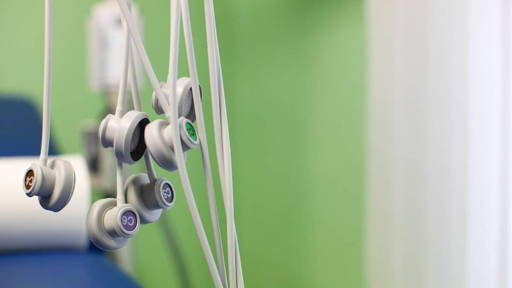The ever-increasing pressure on healthcare requires innovative solutions that meet the needs of patients. One promising development is telemonitoring as an alternative to acute hospital admission via the emergency room (ER). A pilot study at Maastricht UMC+ investigated the feasibility of telemonitoring from the ER, what patients and healthcare professionals think of it, and for which patient groups it can be used.
The study focused on adult patients who were assessed during the day at the ER by an internist or resident. After giving their consent, 98 patients completed a questionnaire about their preferences and barriers to telemonitoring. Some of them were also equipped with a telemonitoring system, which allowed them to be monitored remotely for 24 hours.
Telemonitoring pilot
Telemonitoring was carried out using a patch that transmitted heart rate, respiratory rate and temperature via an app or hospital server. The patient did not have to perform any manual actions. The collected data was not visible to healthcare providers or patients, so that an objective assessment of user-friendliness and experience could be guaranteed.
The most important conditions for patients to replace hospitalisation with home monitoring were:
- Guaranteed hospitalisation in case of deterioration (96.9%)
- 24/7 contact with the treatment team (90.8%)
- Presence of someone at home for supervision (72.4%)
At the same time, patients also saw clear barriers. The most frequently mentioned were:
- Need for treatments that cannot be given at home (such as infusions)
- Feeling too ill to go home
- Feeling unsafe upon returning home
Only 11.2% of patients indicated that hospital admission could have been avoided with telemonitoring; another 6.1% saw it as a possibility under certain conditions. Healthcare providers were slightly more cautious in their assessment. Doctors felt that admission could be avoided in 7.2 percent of patients, while nurses felt this was the case in 10.4 percent. The agreement between patients and professionals was “limited to moderate”.
Patient experiences
Patients who actually underwent telemonitoring said they found the system comfortable and easy to use. It offered peace of mind and confidence. All participants said they would recommend it to family and friends. It is important to note that these patients had a relatively low care profile. They did not need intensive or medium care and lived within 15 kilometres of the hospital.
During use, vital signs were checked three times a day, possibly supported by telephone calls about the experience of the system. No serious complications occurred in this limited group.
Telemonitoring has been in use for some time in patients with chronic conditions and has shown good results in terms of safety, satisfaction and cost savings. However, the transition to acute use in an emergency department setting is relatively new. During the COVID-19 pandemic, cautious experiments were already being conducted with monitoring oxygen saturation in patients staying at home, for example. This study builds on this and offers new insights.
Cautiously positive
Under the right conditions, telemonitoring can be a safe and patient-friendly alternative to hospitalisation, even from an acute setting such as the emergency department, the researchers conclude from the pilot study. However, this requires carefully selected patients, clear agreements about the availability of healthcare professionals, and sufficient support in the home situation.
The pilot study shows that there is support for this innovative form of care among both patients and healthcare providers. Further large-scale studies are needed to determine which patient groups are actually eligible and to achieve structural implementation within the acute care pathway.









